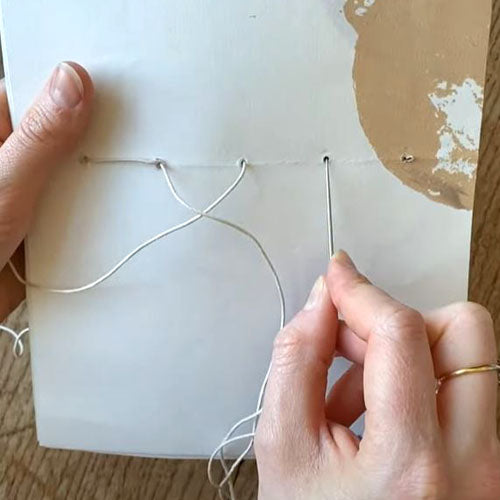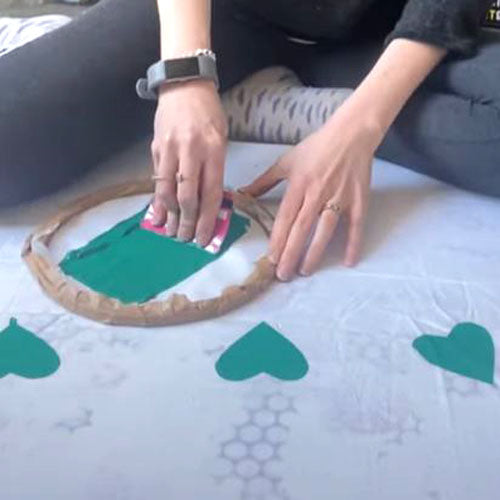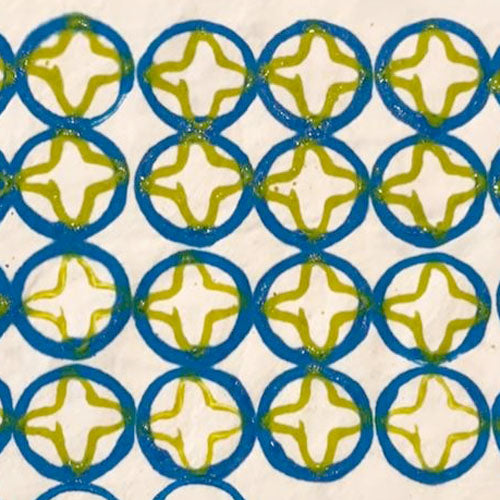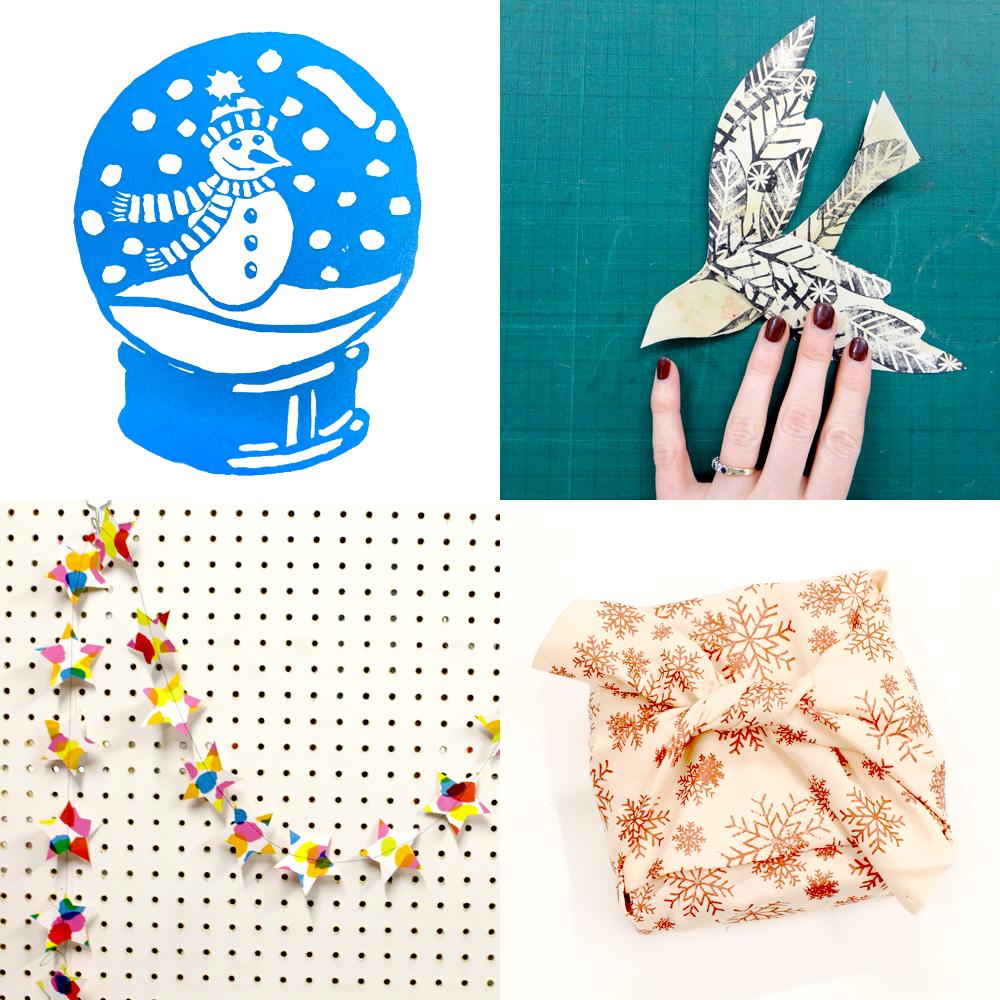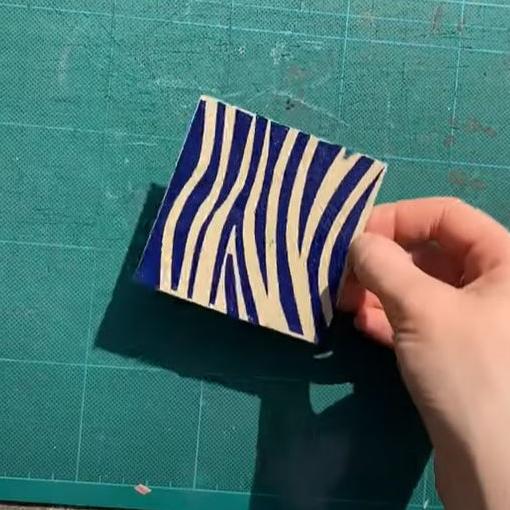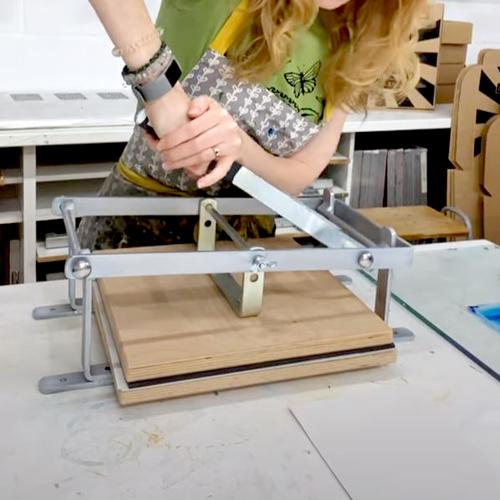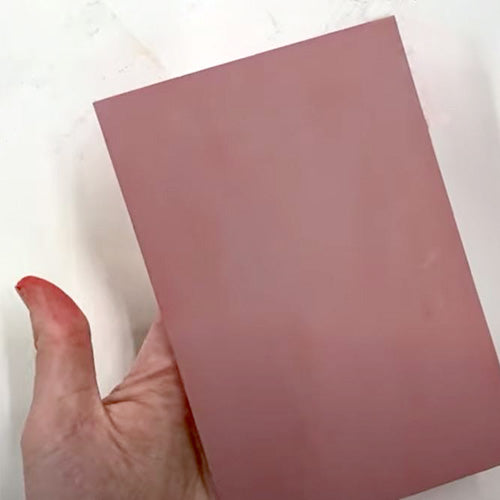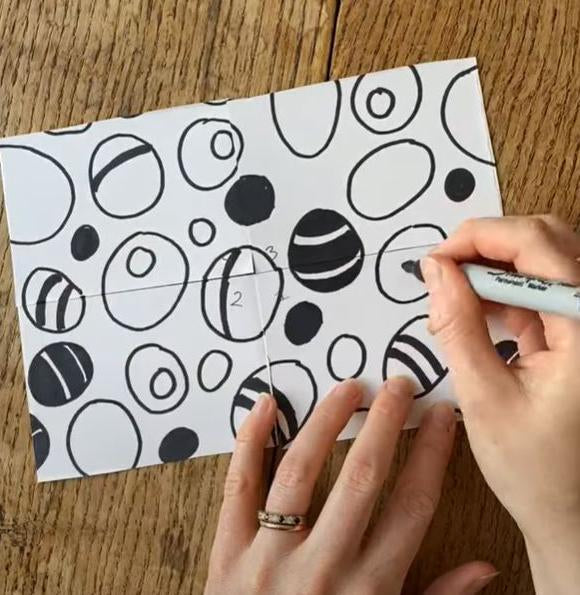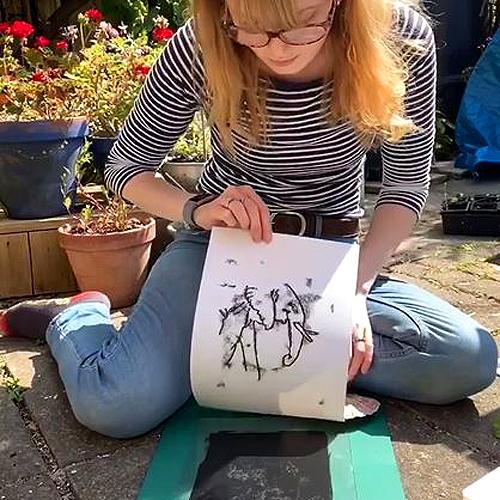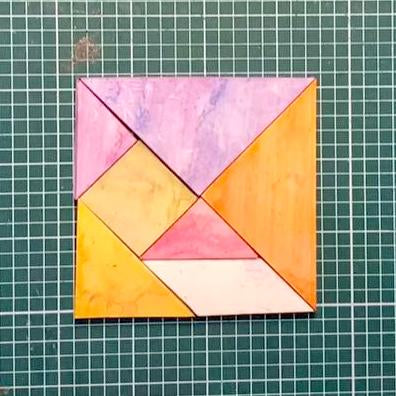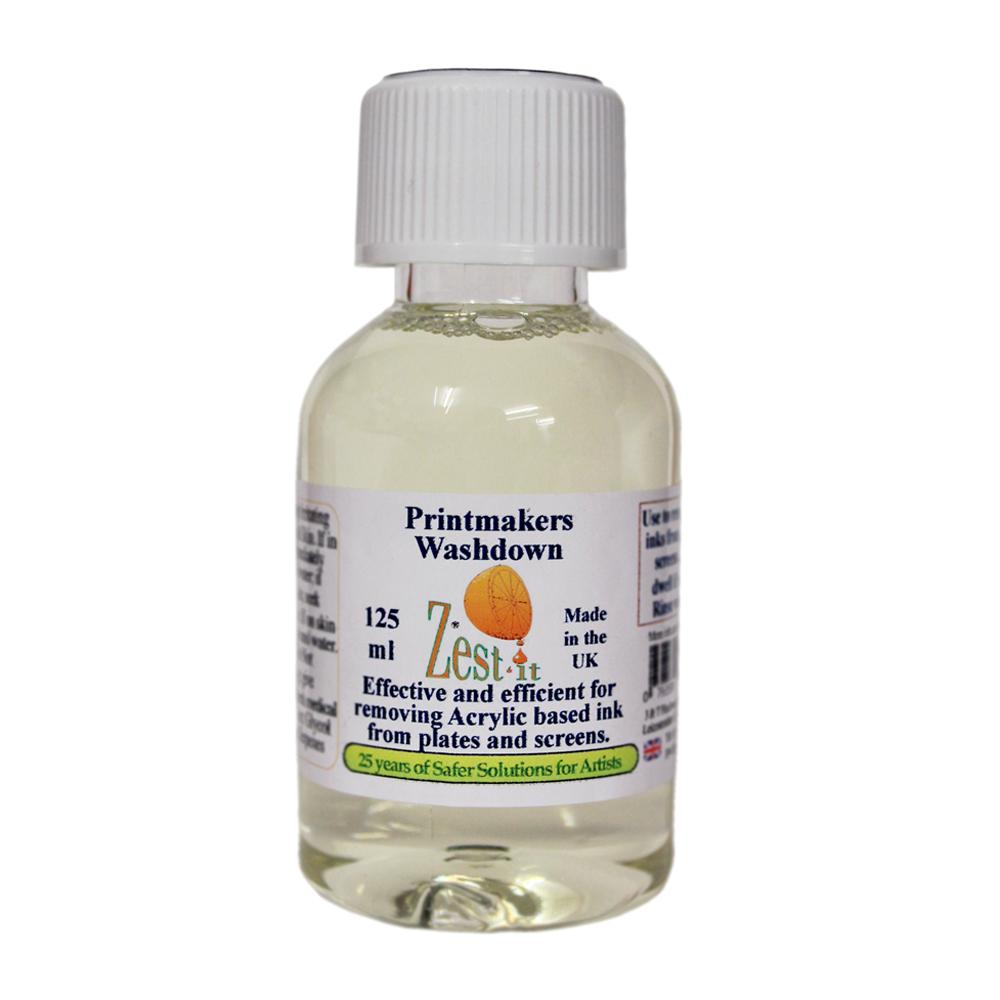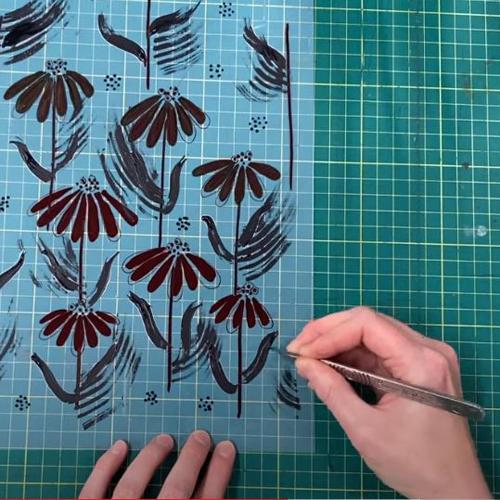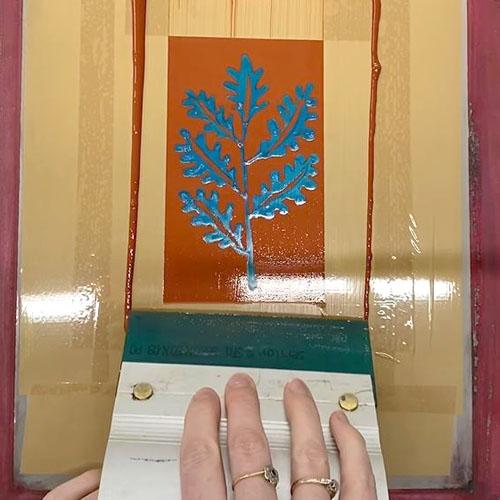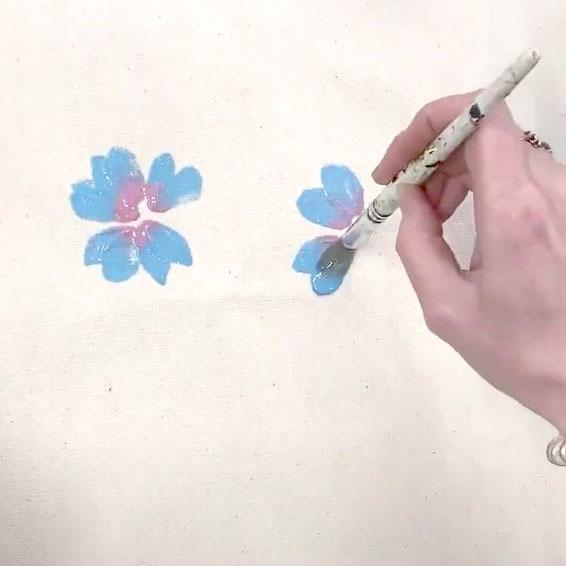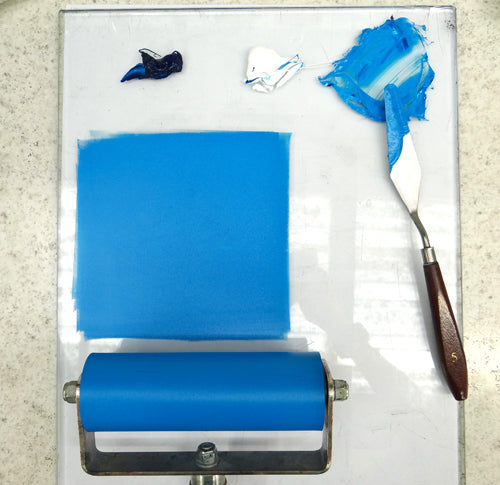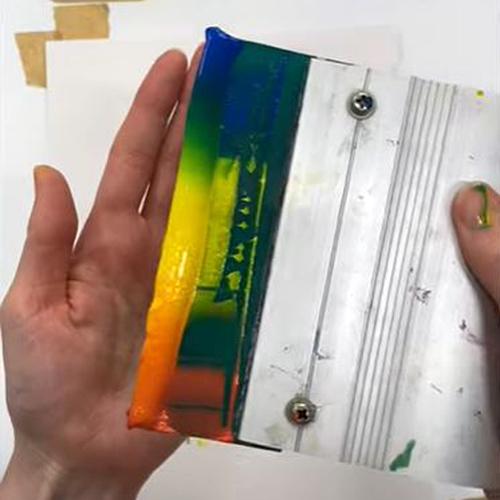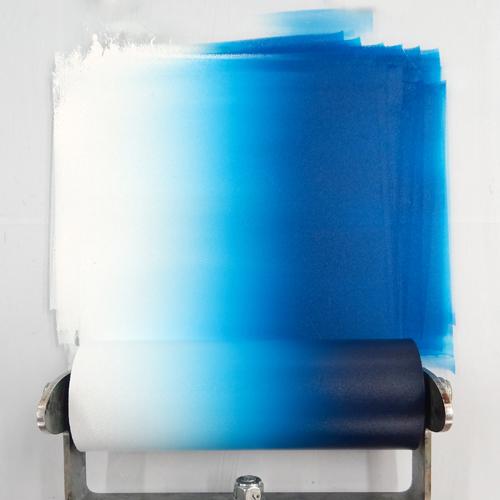-
This speedy project is great to loosen up you printmaking when a blank page is too daunting! It used simple materials and equipment and is great for children too. Scroll down to watch a video or read on. We will be printing with pencil erasers – the little round rubber ends of pencils are perfect...
-
If you have a stack of papers in your house too pretty to recycle then here's a way to make something beautiful from them. It's perfect for misprints and test prints too!
-
Screen printing is a wonderful technique where ink is forced through mesh that has been stretched onto a frame. The best way to do this is using a screen and squeegee but you can also have a go using materials you might have around the house! Scroll to the bottom to watch a video or read on...
-
Here is a quick, easy printmaking method that requires almost no specialist equipment at all! This project is great for adults and children alike and is perfect for loosening up your creativity.
-
Grab your red, green and gold ink and let’s go! Here are 20 Handprinted Christmas projects to keep you in the festive spirit this year. Gift Wrapping Handprinted Christmas Project: Bridget’s Furoshiki Fabric WrappingThis beautiful way of wrapping presents in paper is traditional in Japan but is rising in popularity in the UK too! This …
-
This is an easy way to create a relief print without using any lino! It’s a great project for children as requires no gouges – you can use scissors (grown ups can use craft knives too). These designs would make lovely...
-
Relief Printing Presses are a great option if you want to speed up your lino printing process. This one is available in A4 and square format. This type of press uses a platen to press down firmly to transfer ink from your block to the paper. Read on or scroll to the bottom to watch a …
-
It can be tricky to see where you are carving when making a lino block, making it more easy to make mistakes. An easy solution to this problem is to stain the lino. That way, the colour of the lino on the surface is different to the inside, allowing cut marks to show easily. Read …
-
This method is quick and simple. No digital equipment or software is required: all you will need is paper, a pen/pencil, tape and scissors. With this technique, a repeat pattern can build seamlessly with no awkward joins or obvious lines. It’s perfect for a scatter design and can be used for screen printing or block …
-
This method is fantastically quick and easy. If you’re looing for a way to loosen up your drawing skills and mix up your printmaking, this is one to try! Scroll to the bottom to watch a video or read on for instructions. Begin with a sheet of plastic (drypoint plastic works well for this). You …
-
Etching presses aren’t just for printing etchings. They have a bed that is rolled between two rollers, the top of which is adjustable in height. This makes it great for printing from lots of different surfaces as the tension is customised for each print! Printing a linocut with an etching press is easy with a …
-
If you are completely new to linocut and would like help getting started, you are in the right place! Read on or scroll to the bottom to watch a video. Start with a piece of lino. There are several to choose from, from traditional Lino to Easy Carve to Softcut. You can learn more about …
-
Tangrams are a set of seven puzzle pieces all cut from one square. The pieces can be rearranged into lots of different designs, making them a great activity for children. We can make our own set of tangram stamps from a square of Mastercut or other stamp carving material, to be stamped onto paper or …
-
We have found Zest It Printmakers Washdown an incredibly useful addition to our studio. It’s designed to remove dried on acrylics and so far has got us out of a couple of scrapes. Here are a few ways to use it in your studio: Removing dried on water-based relief printing inks from rollers, blocks and …
-
Making exposed screens is a fantastic way of creating screen prints from your bespoke artwork. If you’d like to make exposed screens at home but would rather skip the digital processes then we have a great way of creating screen films with analogue methods! For detailed advice about exposing your own screens at home, head …
-
Using Drawing Fluid and Screen Filler can create a semi-permanent design on a screen, allowing you to print multiples of your design without stencils, over several sessions if you like. This is not a photographic technique so there’s no need for a light source, a computer or a dark space. This makes it accessible to …
-
Handprinted Fabric Paints come in loads of colours and are so easy to use! Here’s a quick, easy project that’s great for adults and kids alike. Read on for instructions or scroll to the bottom for a video. Cotton fabrics are best for fabric painting. This project uses a heavyweight cotton tote bag but you …
-
Caligo Inks are oil-based but water-washable so they are a fantastic option for your printmaking practice but how do we clean up after using them? Read on or scroll to the bottom of the page for a video. No solvents or special cleaners are needed to clean up Cranfield’s Caligo Inks. Fill an old jug …
-
Usually when you’re screen printing you have to use a different layer for each colour. By using a split fountain we can create a single layer screen print with multiple colours! It’s so easy. Scroll down to watch a video or read on. Set your screen up ready to be printed. You can use a …
-
When mixing Caligo Relief Printing Inks (although this also applies to other brands), we can choose between adding Extender or Opaque White when we want a paler colour. They produce quite different results. Watch our video at the bottom of the page or read on. Extender is a colourless ink. It will make colours more …


